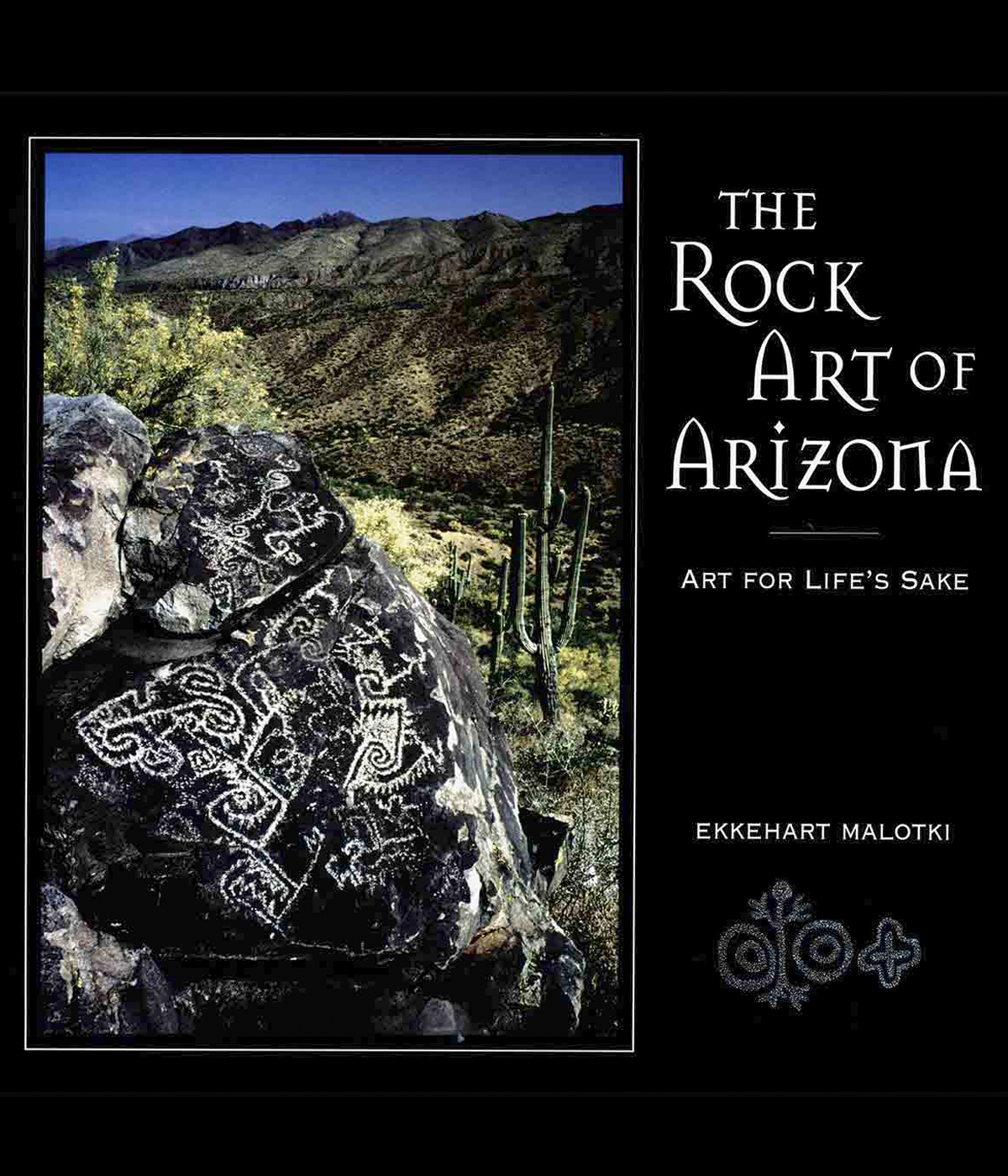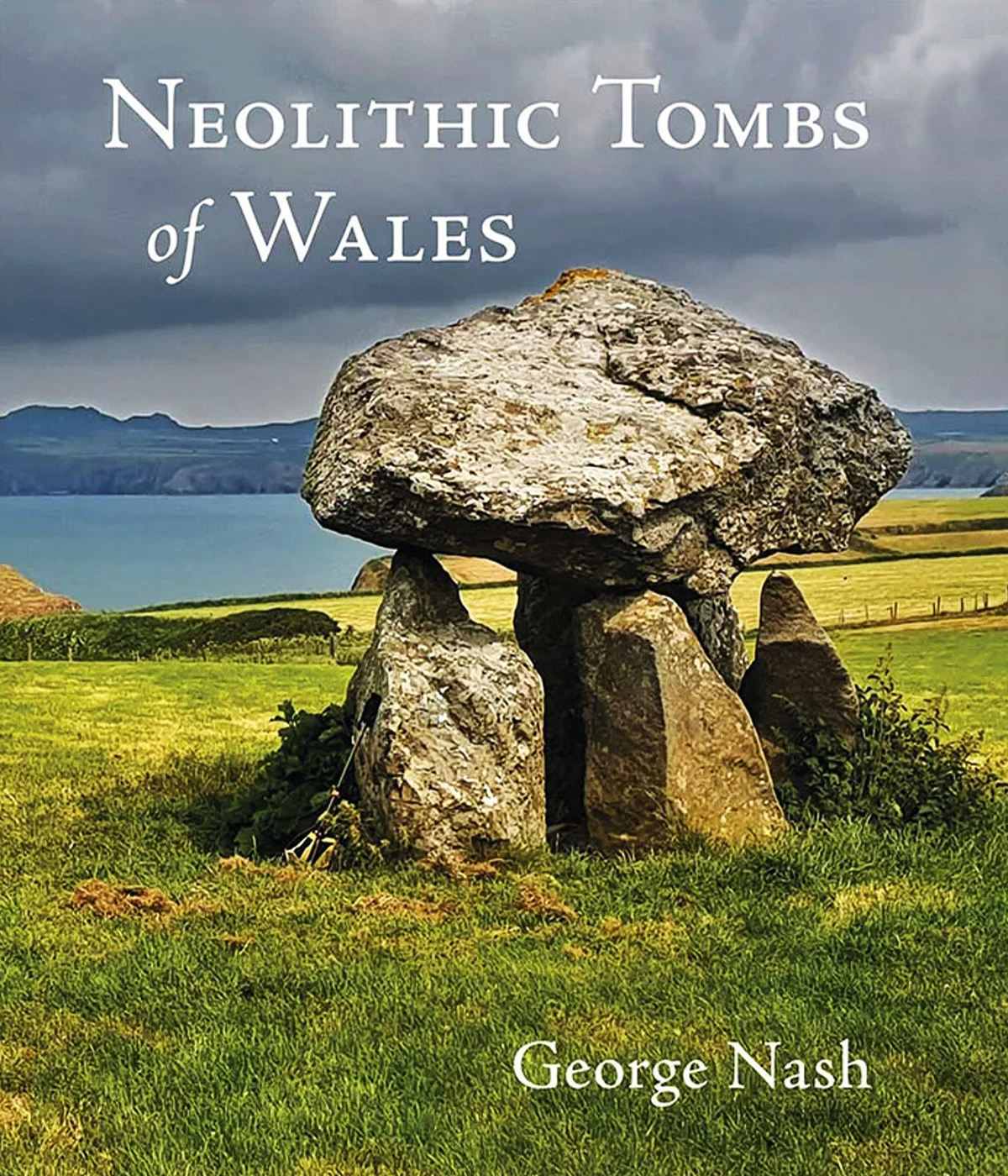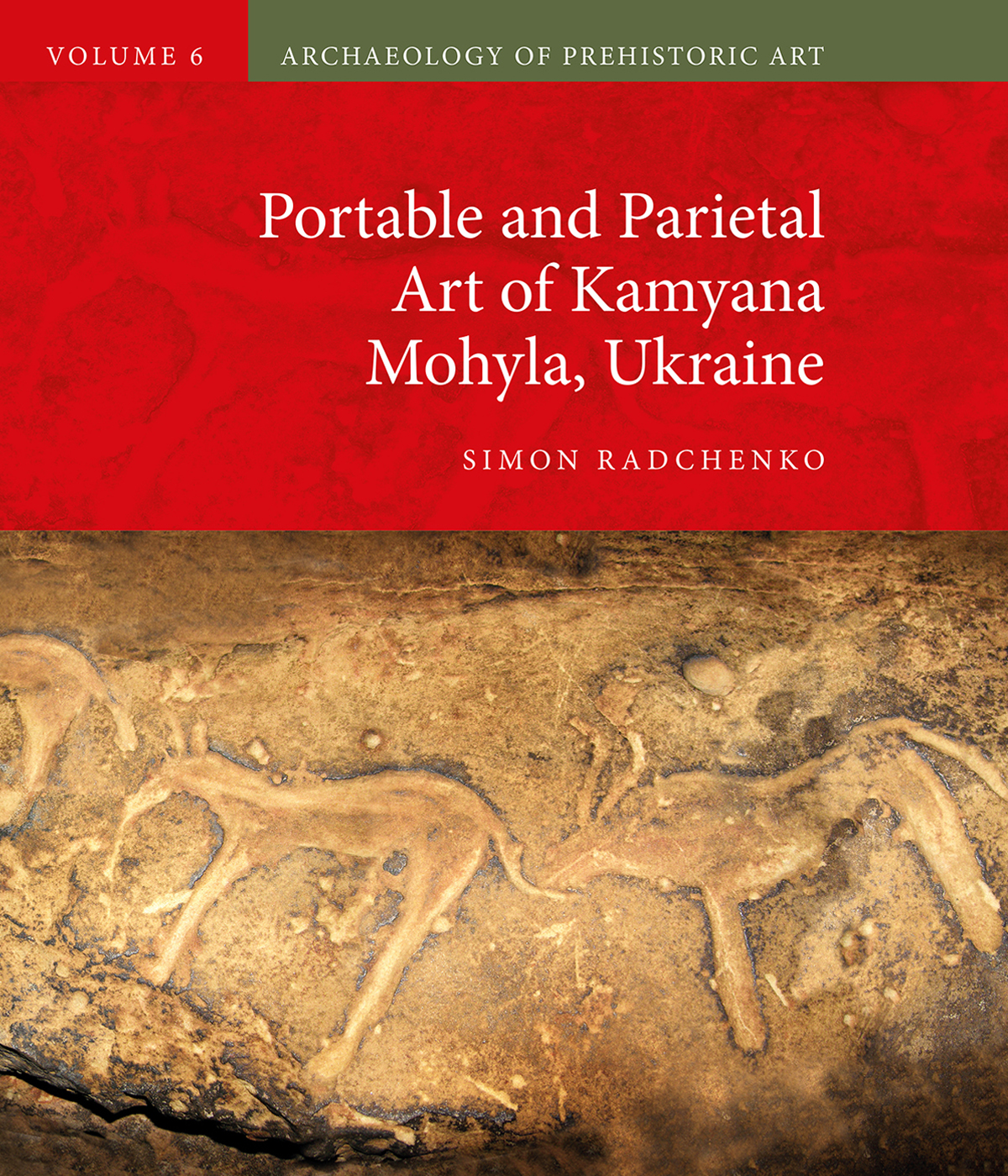


by Ekkehart Malotki
- 2007 Kiva Publishing (July 31, 2007)
- Paperback: 194 pages
- ISBN-10: 1885772386
- ISBN-13: 978-1-885772-37-4
Book Description:
With an estimated 6,000 to 8,000 sites spread throughout its canyons, mountains and deserts, the Grand Canyon state of Arizona constitutes one of the premier rock art theaters in the world. Consisting primarily of engraved images (petroglyphs) on sandstone and basalt, but also offering paintings (pictographs) under overhangs, and ground figures (geoglyphs) on desert pavements, Arizona's rock art truly commands awe and respect. This book, in a comprehensive survey, presents the full gamut of the state's impressive open-air art from its earliest beginnings until more recent manifestations in the historic era. Though The Rock Art of Arizona contains more than 380 color photographs, over 130 drawings, and numerous charts and maps, it goes beyond the usual bounds of a lavishly illustrated coffee-table book.
In addition to describing the various Archaic and post-Archaic rock art styles and traditions in the state's fifteen counties, author Ekkehart Malotki focuses on providing insights into what may have compelled Arizona's ancestral artists to produce the imagery and what functions it may have had in their daily lives. At the same time, he acknowledges the severe limitations of scientifically dating the paleoart, the subjective biases involved in stylistic classification, and the ultimate mystery of its meaning. Within the confines of this explanatory framework, drawing primarily on novel ideas derived from the field of evolutionary psychology and the concept of human universals, he argues that rock art, in a broadly defined context of art and ritual, had beneficial adaptive value in the human struggle for survival and thus can truly be perceived as art for life's sake.
Bradshaw Foundation review:
The first thing I noticed about this beautifully presented book is the subtitle. Straight away, the author establishes his intriguing hypothesis, which he goes on to explain with clarity and eloquence. Indeed, ‘The Rock Art of Arizona: Art for Life’s Sake’ helps redress the imbalance of coverage of rock art in North America. This is done in a way that will more than satisfy novices, aficionados and experts alike.
Malotki begins with the sober and poignant question - what exactly is ‘art’? He suggests that today, ‘art is for art’s sake, and that it has become a detached aesthetic experience’. Indeed, ‘art critics supply the art with its rationale’. The author examines whether this has always been the case by considering the motivation behind the ancient rock art. Did the making of an image on rock and its possible use by early humans help them survive in a demanding environment? Answers to questions such as this were now being aided by the relatively recent allegiance of neuroscience, evolutionary psychology and human ethology.
For me, the tantalizing aspect of the rock art of Arizona- the most ancient of which is thought to date to the early Holocene - revealed by this publication is that it is composed predominantly [but not exclusively] of abstract geometric markings. Not only that, but how similar they are to other ancient geometric markings found throughout the world. Malotki addresses this issue, referring to them as ‘phosphenes’ - non-figurative motifs that act as visual archetypes, or entoptic phenomena, and which are experienced by all humans and which are impermeable to cultural conditioning. These, the author argues, are hard-wired into our visual system. These ‘human universals’ - which are not static but dynamic - seem to endorse Stephen Oppenheimer’s ‘Journey of Mankind’ Genetic Map, which clearly illustrates, as Malotki suggests, that modern humans in fact are one biological family & one species, a point that anthropologists, among others, are only just beginning to fathom.
The book carefully considers and explains all aspects of rock art in this context, from techniques to dating, from style to iconography, all of which are shown with their strengths and weaknesses. But above all, Malotki has the courage to tackle the thorny subject of their purpose and meaning. Because without this, he argues, rupestrian research will become a ‘sterile endeavour’.
Is their true and original meaning unknowable? Whilst there is no single global model, the author argues that rock art can be seen as a universal attempt to communicate - to some form of supernatural force - a deep desire for survival. With the ur religion of all hunting peoples, at the core lies an individual or ritual specialist who, on behalf of his group, acts as an intermediary between the mortal world and the spiritual world. Employing altered states of consciousness - or trance - they access the spirit world. Afterwards, they commemorate their visionary experiences by creating replicas of their hallucinated images. These not only preserve their trance visions [in the art] but they may also act as portals to return to the spirit world.
The author adopts the "artification hypothesis," as developed by ethologist Ellen Dissanayake, that treats art as instances of a universal desire to ‘make important things special’ (or to "artify"). Artifying is intended to create certainty in a world of uncertainty, to create ‘cultural super order’ in an attempt to counter entropy. This is humankind’s earliest stamp on the planet, changing it from a ‘landscape’ to a ’mindscape’ - the regular geometric motifs represent an understood order, and therefore the rock art sites themselves become shrines within this ‘mindscape’. Control is imposed in a dangerous world, perhaps as the Inuit intended by placing their inuksuit stone structures within the Arctic landscape.
‘The Rock Art of Arizona: Art for Life’s Sake’ reveals one of the most impressive collections of rock paintings and engravings I have seen, and to have it photographed and presented so professionally is a rare pleasure. But this book provides valid theories and plausible explanations of rock art that go well beyond the Arizona state boundaries - they have a global relevance. It also provides the art itself with a relevance; it seems entirely feasible that art truly is for life’s sake. I cannot recommend this more highly.
Praise for The Rock Art of Arizona:
A comprehensive book on the rock art of Arizona was missing. Ekkehart Malotki has now provided it and he has done it beautifully. Thanks to his superb photographs, readers will be amazed at the wealth and splendor of what is undoubtedly one of the most impressive collections of rock art paintings and engravings in the world, set in incredible landscapes that played a vital part in their significance. The author also stresses the various functions and meanings of the art insofar as we can comprehend them. As he did so simply and clearly, general readers, rock art enthusiasts and specialists will all be deeply interested in this landmark publication. - Dr Jean Clottes, president of IFRAO (international Federation of Rock Art Organizations)
Ekkehart Malotki:
Ekkehart Malotki is professor emeritus of languages at Northern Arizona University where he taught German, Latin, and Hopi from 1977 until 2004. For more than twenty-five years, his work as an ethnolinguist has focused on the preservation of Hopi language and culture. In addition to over a dozen bilingual works on Hopi semantics and oral literature, he has published three children’s books based on authentic Hopi stories. For over ten years, he was the principal data contributor to the Hopi Dictionary/Hopìikwa Lavàytutuveni. He also provided the Hopi titles, including that of Koyaanisqatsi, to Godfrey Reggio’s movie trilogy on our destructive behavior toward this planet. During the last fifteen years, his passion for rock art has taken him to the Sahara, to the Paleolithic caves in France, to Sweden, Norway, and Mexico, and twice to Australia. In addition, he has devoted much of his time to the photography and interpretation of the rock art of the American Southwest. He has published a book describing the various rock art styles and traditions of the entire state of Arizona, entitled The Rock Art of Arizona: Art for Life's Sake.
by Kate Winter
13 November 2025 Book Review Archive
→ Neolithic Tombs of Wales
by George Nash
19 November 2024
by Simon Radchenko
22 May 2024
by Meenakshi Dubey-Pathak and Jean Clottes
10 November 2023
by Paola Demattè
12 January 2023
by Paul Pettitt
10 November 2022
by George Nash
19 November 2024
by Simon Radchenko
22 May 2024
by Meenakshi Dubey-Pathak and Jean Clottes
10 November 2023
by Paola Demattè
12 January 2023
by Paul Pettitt
10 November 2022
Friend of the Foundation
by George Nash
19 November 2024
by Simon Radchenko
22 May 2024
by Meenakshi Dubey-Pathak and Jean Clottes
10 November 2023
by Paola Demattè
12 January 2023
by Paul Pettitt
10 November 2022














